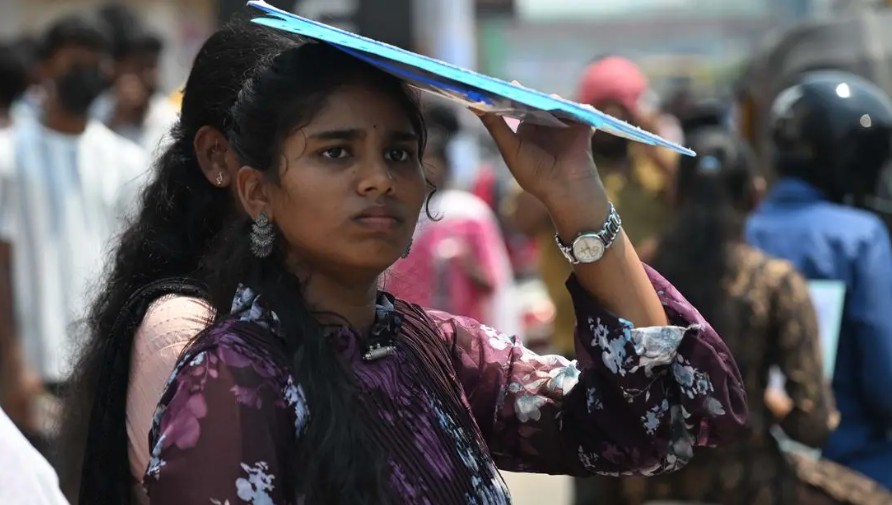In recent years, India has been grappling with an alarming increase in extreme weather conditions, with heat waves becoming more frequent and intense. A new study has found that major cities, including Bengaluru, Delhi, Faridabad, Gwalior, Kota, Ludhiana, Meerut, Mumbai, and Surat, are primarily focusing on short-term solutions to combat the devastating effects of these extreme temperatures. While these cities have taken various measures to provide immediate relief to their residents, the study highlights that long-term strategies to address climate change and urban heat management remain largely underdeveloped.
The Rising Threat of Heat Waves
Heat waves have become one of the most pressing climate-related challenges in India, posing significant risks to human health, infrastructure, and overall urban sustainability. Temperatures in many parts of the country have been soaring beyond record highs, affecting millions of people, particularly those in densely populated urban areas. Scientists and environmentalists have repeatedly warned that without long-term mitigation strategies, the frequency and severity of heat waves will continue to rise, leading to more heat-related illnesses, energy shortages, water crises, and economic disruptions.
According to the study, urban areas in India are increasingly experiencing the “urban heat island effect,” where concrete structures, roads, and other infrastructure absorb and retain heat, making cities significantly warmer than surrounding rural areas. As a result, cities such as Bengaluru, Delhi, Faridabad, Gwalior, Kota, Ludhiana, Meerut, Mumbai, and Surat are struggling to keep their populations safe from extreme temperatures.
Short-Term Measures in Cities
The study found that many Indian cities have adopted various immediate solutions to deal with heat waves, such as setting up temporary cooling shelters, increasing water supply, and issuing public advisories on heat safety. While these measures are crucial for immediate relief, they fail to address the underlying causes of rising temperatures and provide long-term protection for residents.
In Delhi, for example, the government has implemented measures such as sprinkling water on roads to reduce surface temperatures, deploying misting fans in public places, and increasing the availability of drinking water in high-risk areas. Similarly, Mumbai has been focusing on short-term strategies such as ensuring uninterrupted electricity supply to keep air conditioning and fans operational, as well as distributing oral rehydration solutions (ORS) to prevent dehydration-related illnesses.
In cities like Gwalior, Kota, and Meerut, local authorities have been advising people to stay indoors during peak hours and have been installing temporary cooling centers in community spaces such as schools and government buildings. However, these measures provide only temporary relief and do not tackle the root causes of excessive urban heating.

The Need for Sustainable, Long-Term Solutions
Experts emphasize that while short-term fixes can help reduce the immediate impact of heat waves, cities must adopt long-term strategies to build resilience against rising temperatures. Some of the key solutions proposed include increasing urban greenery, improving building designs, investing in sustainable cooling solutions, and enhancing public transportation systems to reduce vehicle emissions that contribute to urban heat.
One of the most effective ways to combat rising temperatures is by increasing the amount of green spaces in cities. Trees and parks not only provide shade but also help cool the air through evapotranspiration. Cities like Bengaluru and Surat, which have seen rapid urbanization, have lost significant portions of their green cover, exacerbating the heat problem. Environmentalists argue that urban planners must prioritize reforestation, rooftop gardens, and vertical green walls to mitigate the heat island effect.
Another critical long-term solution is the use of reflective and heat-resistant building materials. Many cities in developed countries have adopted “cool roofs” and “cool pavements” that reflect more sunlight and absorb less heat. Indian cities, however, continue to use conventional building materials that trap heat, leading to increased indoor temperatures and higher energy consumption for cooling. Government incentives and regulatory changes are needed to encourage builders to adopt heat-resistant construction materials.
Water management is another essential factor in combating heat waves. Many Indian cities face severe water shortages during the summer months, which worsens the impact of heat waves. In cities like Ludhiana and Faridabad, where groundwater depletion is a major concern, authorities must invest in rainwater harvesting, wastewater recycling, and sustainable irrigation methods to ensure adequate water supply during extreme heat conditions.
Public transportation and urban mobility also play a significant role in urban heat management. Traffic congestion and excessive use of private vehicles contribute to increased air pollution and heat retention in cities. Investing in efficient and climate-friendly public transport systems, such as electric buses, metro rail networks, and pedestrian-friendly infrastructure, can significantly reduce heat emissions from vehicles and make cities more livable.
Challenges in Implementing Long-Term Strategies
Despite the urgent need for sustainable heat management strategies, several challenges hinder their implementation. One of the biggest obstacles is the lack of policy integration between urban planning and climate adaptation. Many cities continue to expand rapidly without considering climate resilience in their development plans. Additionally, budget constraints often prevent municipalities from investing in large-scale projects such as urban forests, water conservation systems, and heat-resistant infrastructure.
Another major challenge is the lack of public awareness and engagement. Many people remain unaware of the severity of heat waves and the long-term risks associated with rising temperatures. Educating the public about the importance of green spaces, water conservation, and sustainable urban development can help build support for long-term climate adaptation measures.
Political will is also a key factor in addressing the heat wave crisis. While some state governments have taken initiatives to mitigate the effects of extreme heat, there is a need for a coordinated national strategy to ensure that all cities adopt and implement climate-resilient policies. Experts suggest that the central government should provide funding and technical support to help cities transition from short-term reactive measures to proactive, sustainable solutions.
A Call for Comprehensive Heat Action Plans
The study underscores the need for comprehensive Heat Action Plans (HAPs) that go beyond temporary relief measures. Some Indian cities, such as Ahmedabad, have successfully implemented long-term heat mitigation strategies, including early warning systems, improved public health infrastructure, and city-wide cooling initiatives. These models can serve as blueprints for other cities looking to build resilience against extreme heat.
A well-designed HAP should include elements such as:
- Climate-responsive urban planning: Incorporating green spaces, water bodies, and reflective materials in city planning.
- Improved healthcare infrastructure: Ensuring hospitals and clinics are equipped to handle heat-related illnesses.
- Public awareness campaigns: Educating citizens about heat wave risks and prevention strategies.
- Enhanced early warning systems: Using technology to predict and communicate heat waves more effectively.
Conclusion
The increasing frequency and intensity of heat waves in India require cities to shift their focus from short-term fixes to long-term sustainable solutions. While immediate relief measures such as cooling centers and public advisories are necessary, they are not enough to address the underlying causes of urban heat stress. Cities like Bengaluru, Delhi, Faridabad, Gwalior, Kota, Ludhiana, Meerut, Mumbai, and Surat must invest in sustainable urban planning, green infrastructure, and climate-resilient policies to protect their populations from future heat waves.
The challenge of rising temperatures is not just an environmental issue but a public health and economic concern as well. By prioritizing long-term strategies and integrating climate resilience into urban development, Indian cities can become better equipped to handle extreme heat and ensure a safer, healthier future for their residents.


